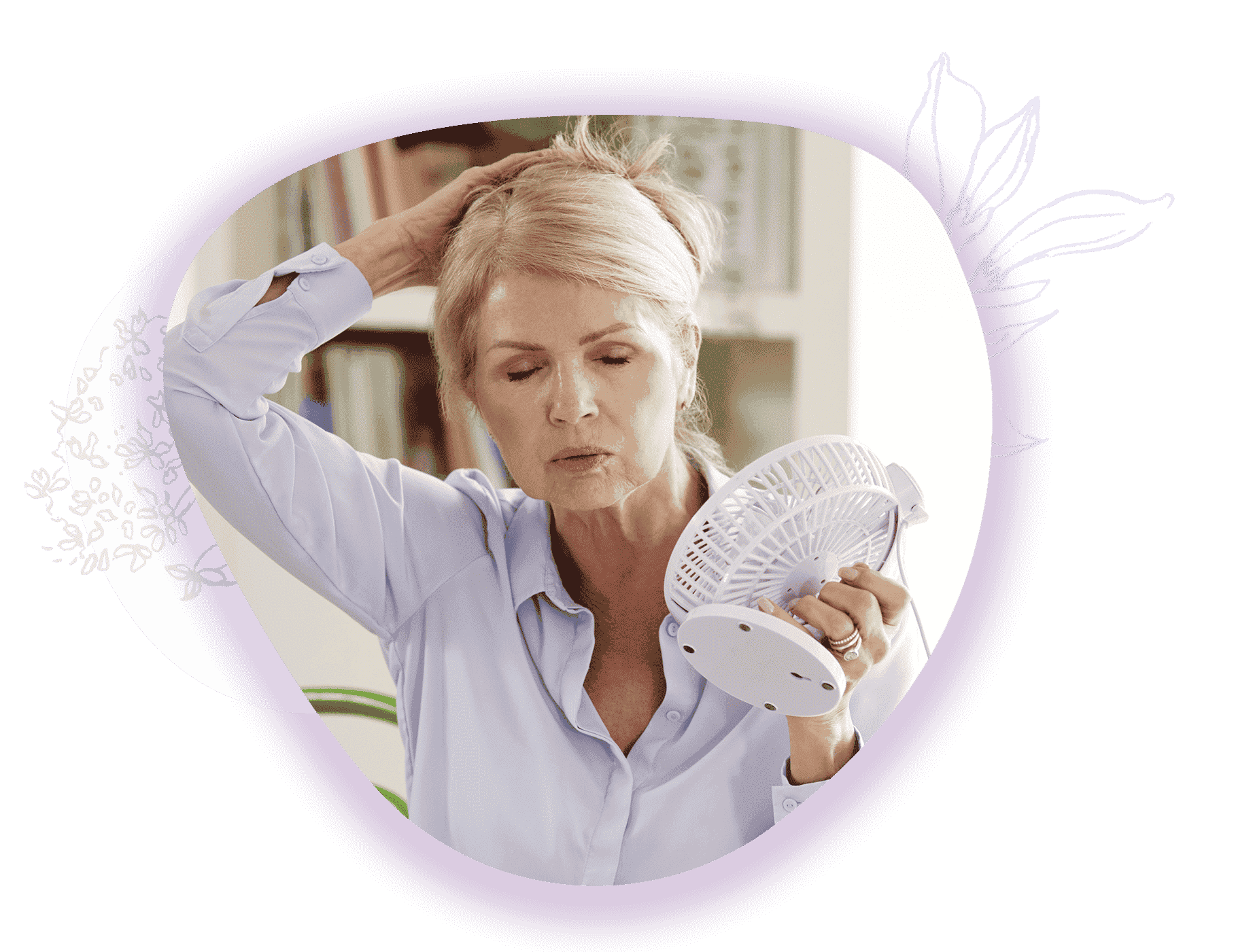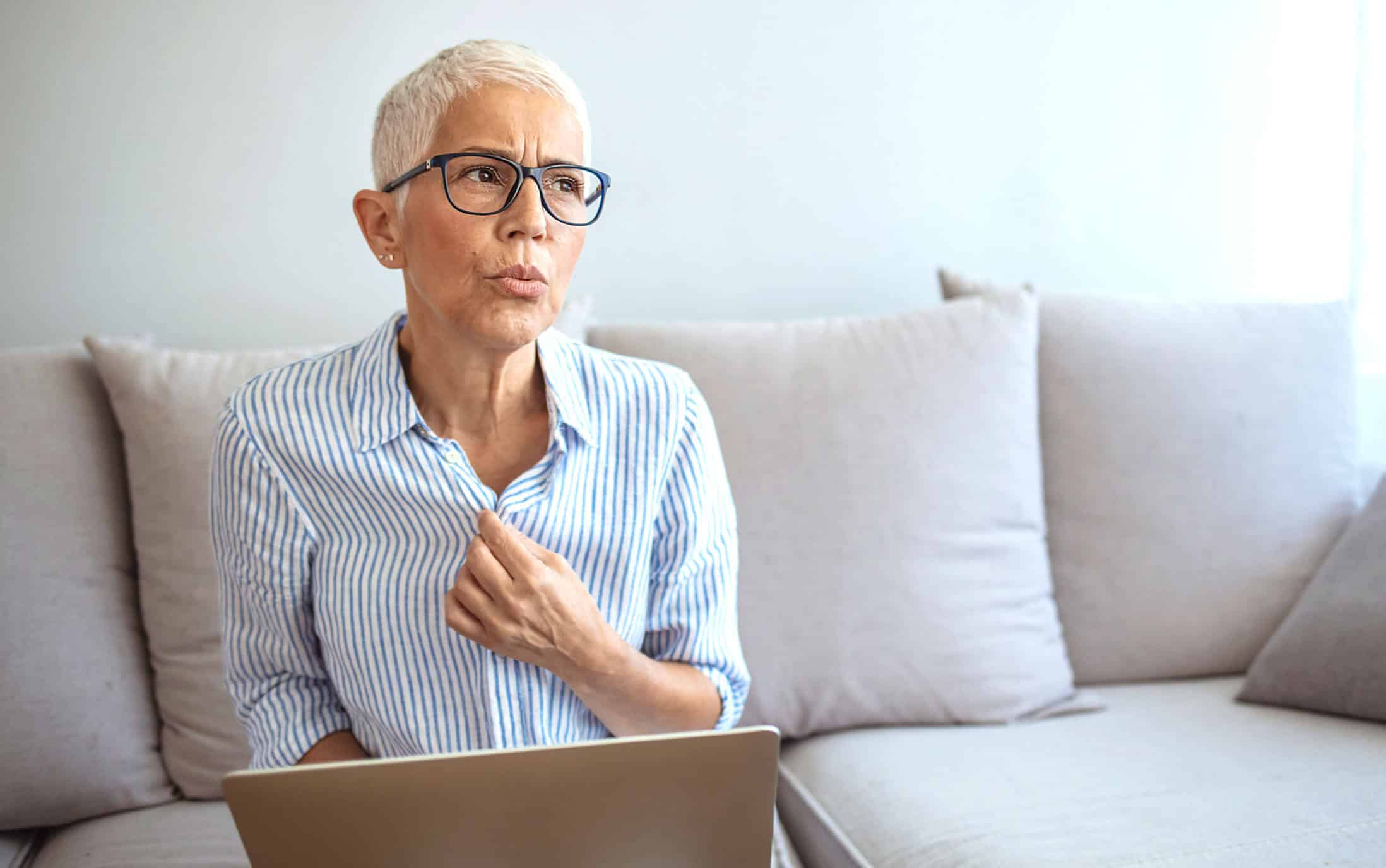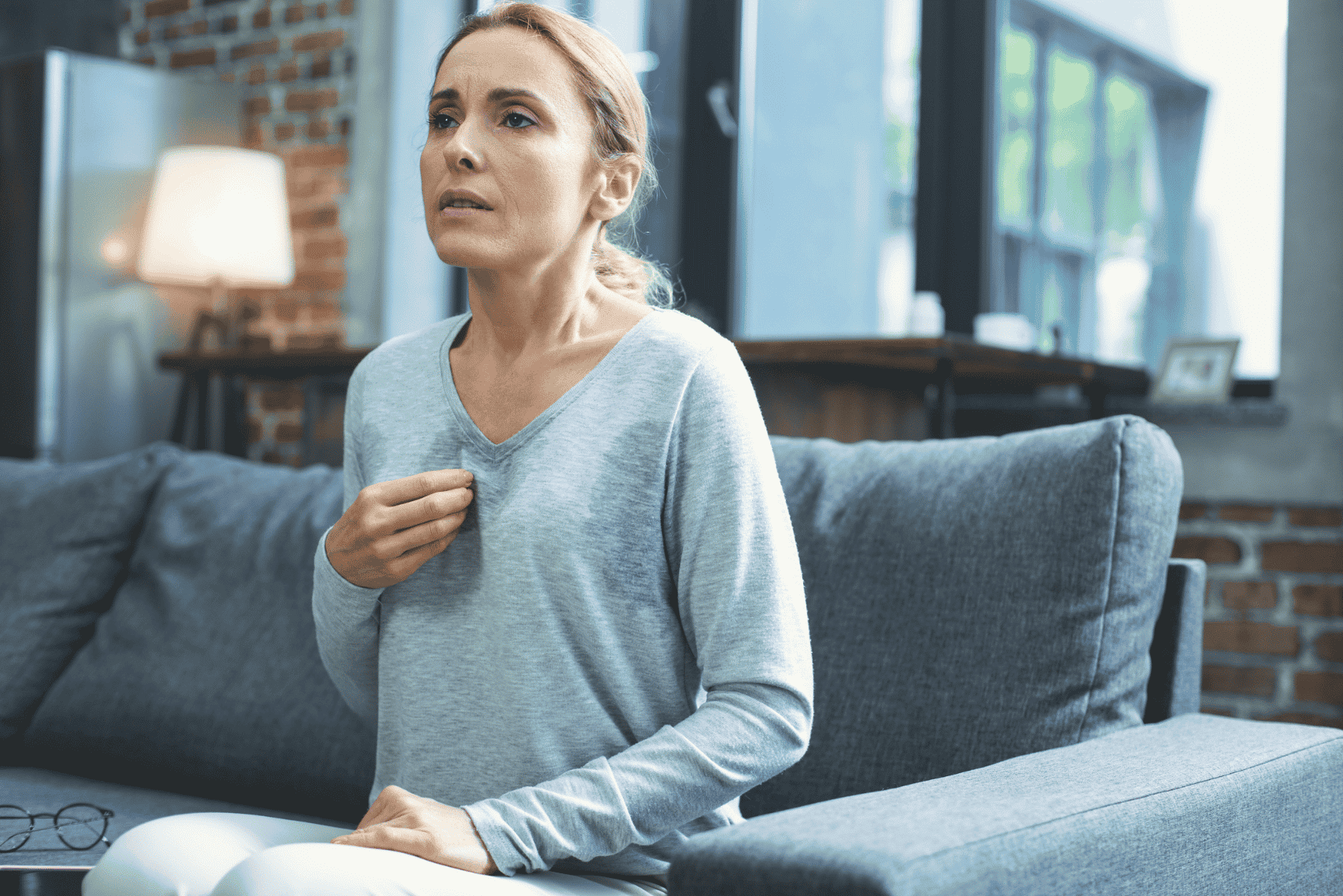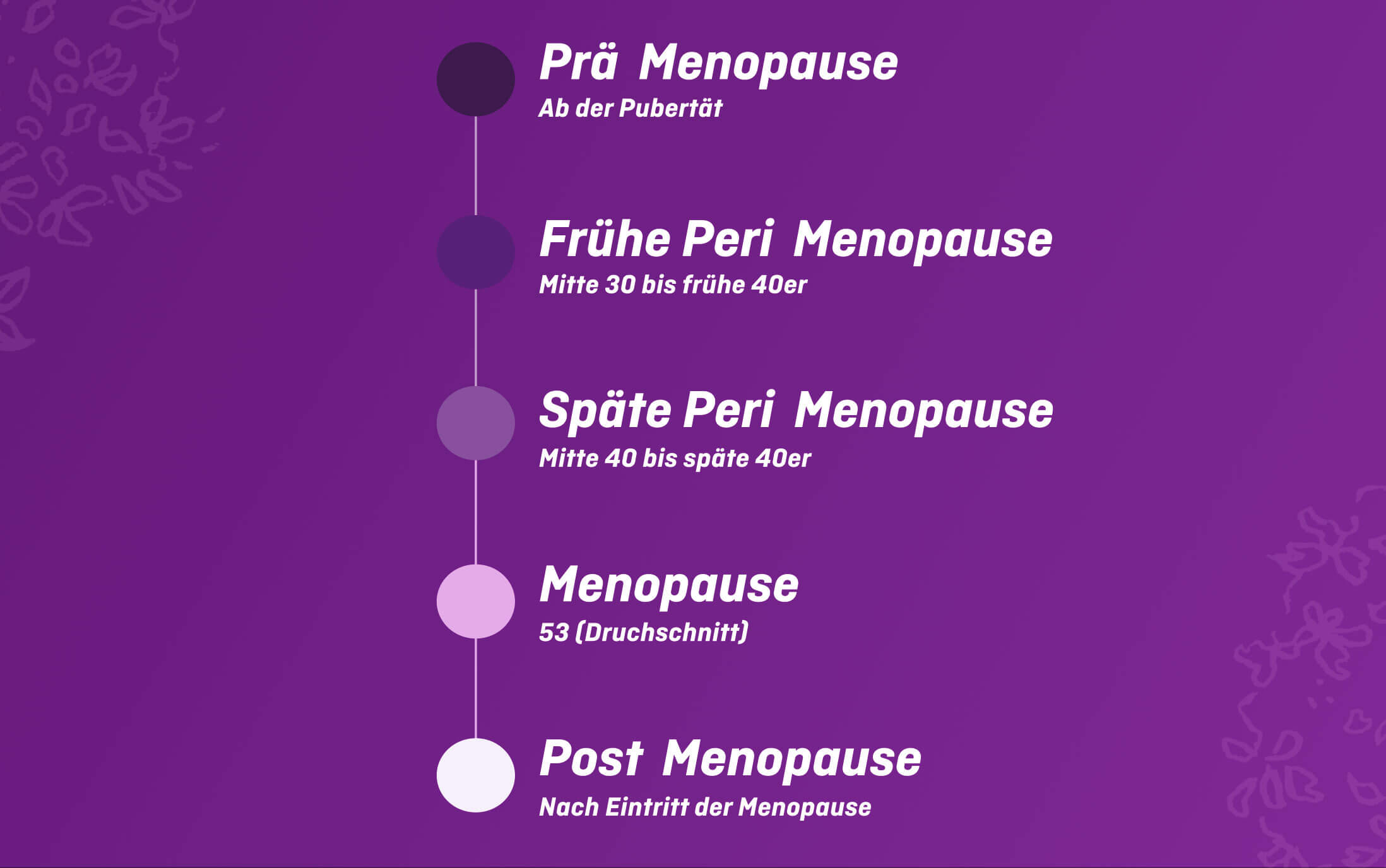Hot flushes during the menopause
Constant hot flushes, unpleasant excessive sweating and night sweats that rob sleep are experienced by almost all women during the menopause. Find out more about these symptoms, what causes them and how you can treat them.

Hot flushes during the menopause: Signs and symptoms
Sweating during sport or in the sauna is an entirely normal reaction by the body to regulate body temperature. Even excessive sweating (medical: hyperhydrosis) or night sweating can occur more or less often in anybody and has different causes such as infections, severe overweight, mental triggers and alcohol, nicotine or spicy meals. However, during the menopause, at least two-thirds of women experience what are known as vasomotor complaints such as hot flushes, night sweats and excessive sweating.
Hot flushes usually start around the breasts and spread out episodically across the neck and head into the upper arms. Heart rate increases and skin redness, excessive sweating and heart palpitations may occur. While the episodes are usually relatively short and often only last a few minutes, they can occur several times a day.

Hot flushes, night sweats and excessive sweating are among the most common side effects during the menopause.
Hot flushes during the menopause – What you need to know
Hot flushes, night sweats and excessive sweating are among the most common side effects during the menopause and are therefore a highly characteristic sign of the menopause. Hot flushes are the body’s way of reacting to changes in hormone levels during the menopause. Over time, they subside again. While the duration and severity of the hot flushes differ greatly, they usually occur 1 to 2 years before the menopause and can continue for up to 5 years after the menopause.
Hot flushes during the menopause: Prevention and treatment
Hot flushes, excessive sweating and night sweats are unpleasant, annoying and can be a burden. They are temporary side effects of the menopause and are not due to an actual illness in this case.
If the vasomotor complaints are only light, household remedies and changes in behaviour can prove helpful, for moderate complaints, over-the-counter medication is worth considering and with severe symptoms, medical treatment can be an option.

What actually causes hot flushes?
The vegetative nervous system is a complex autonomous control system in the human body and regulates many processes such as breathing, heartbeat or metabolic processes, as well as body temperature.
The human body’s thermal regulation is responsible for maintaining a constant body temperature of around 37 degrees. When the body warms up, such as due to sport or fever, sweat is formed to cool down the body again. By contrast, during cold in winter, the peripheral vessels constrict to reduce heat loss.
One cause discussed for hot flushes is that the hormonal changes in the menopause impair the function of the temperature regulation circuit.
The body likely incorrectly interprets even low fluctuations in body temperature as in need of correction and responds with hot flushes, skin redness and excessive sweating.
During the menopause, an adjustment takes place and the thermal regulation begins to function normally again. The duration and severity of this adjustment process vary greatly depending on the individual.
menoelle® and hot flushes
Thanks to their holistic mode of action, menoelle® tablets are the means of choice for the effective, hormone-free and well-tolerated alleviation of menopausal symptoms, particularly if a classic or herbal hormone therapy is not possible or desired.
menoelle® tablets are also a reasonable alternative if other products are not effective enough or cannot be considered due to risks of side effects or their restrictions of use.
Hot flushes mainly occur during the perimenopause and early postmenopause and subside again afterwards.
One in five women experience the symptoms so severely that medical treatment is considered. Hot flushes can last for up to 15 years, with the usual duration at 4 to 5 years. The perimenopause and early postmenopause are the periods in which hot flushes are typically at their strongest.
More than anything, hot flushes are tedious and unpleasant. What can you do to treat them?
If possible, avoid everything that facilitates hot flushes. Follow a healthy lifestyle with a balanced diet, making sure to get enough exercise, and do yoga for balance and relaxation:
Avoid or reduce your consumption of simulants such as coffee, black tea, alcohol and cigarettes, along with hot spices such as ginger or chilli, or even heavy meals.
Overweight can also make you sweat more easily, which is why it helps to maintain or aim for a normal weight.
Loose and breathable cotton clothing is a recommended choice during “hot periods”.
A light diet with lots of fruit and vegetables along with sufficient fluids – ideally at least 2 litres of mineral water or unsweetened tea a day – is best.
Exercise and sport also have positive effects, whether in everyday life – skipping the car or the lift for a change – or going out walking, cycling, strolling or hiking.
Yoga, autogenic training or Tai Chi are good ways to break down stress directly and relax.
EstroG-100® and hot flushes: The natural medicinal herb extract EstroG-100® alleviates numerous unpleasant symptoms during the menopause and is highly effective against hot flushes and night sweats. Clinical studies have shown a reduction in the occurrence of hot flushes and night sweats of around 65%.
Unlike all other remedies for menopausal symptoms, menoelle® tablets do not come with any usage restrictions. What’s more, they are not known to have any undesirable effects, meaning you can alleviate your symptoms with menoelle® long term.
Cue: Visit the doctor
Severe vasomotor complaints are an approved indication for a hormone replacement therapy (HRT). As many women have their reservations against an HRT, an in-depth examination and consultation with your trusted doctor is essential to clarify the necessity and your personal risk factors as well as alternative options.
It is important to know that the risks of HRT are mainly linked to age, dose and duration of use. This is why an HRT is now used as early as possible, in as low doses as possible and for as short a time as possible.
As hormone-free alternatives to the treatment of hot flushes, there are now good experiences with different prescription medications that are actually used with other indications. For example, low-dose SSRI type antidepressants (and also SNRI type) are proven for treating hot flushes and have partial approval to do so in the USA. As selective serotonin reabsorption inhibitors, they also normalise regulation of the body temperature. The main effect can still be desired if a depressive mood is also present at the same time.


Sage for excessive sweating and night sweats?
Sage is an aromatic spice found in Mediterranean cuisine, in dishes such as saltimbocca. Sage is also a precious medicinal herb and not only helps with inflammations in the mouth and throat area, but also with increased sweating. Simply drink a cup of sage tea in the morning and evening every day – cold sage tea is better suited for night sweats.
Source:
Medizinische Leitlinie Menopause: https://www.awmf.org
Journal für Gynäkologische Endokrinologie: https://www.kup.at
Stockists
menoelle® menopause tablets can be purchased in dm, Rossmann, Müller, BUDNI and Globus branches.
menoelle® menopause tablets can also be purchased online at menoelle, aponow, dm, Rossmann, Müller, Amazon.






